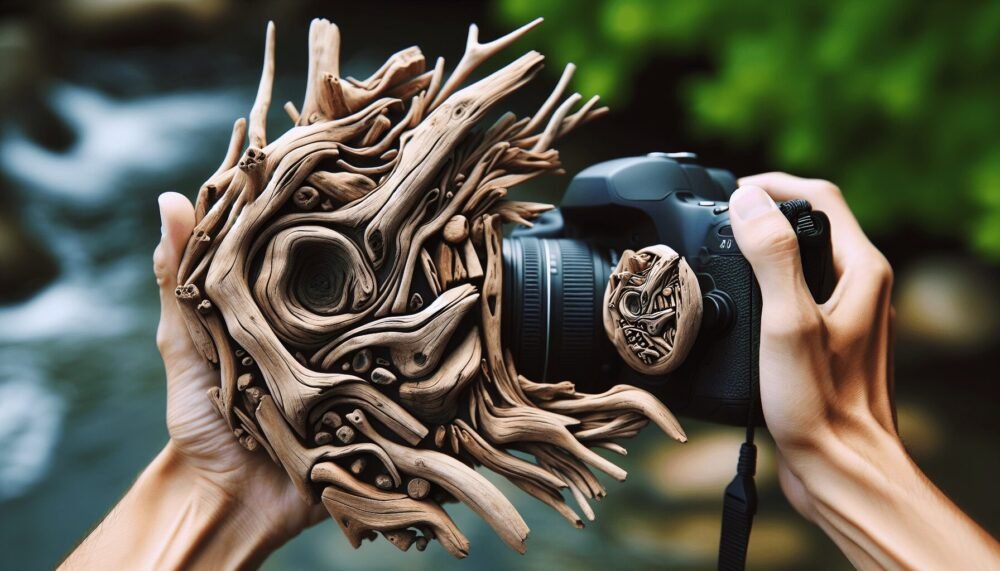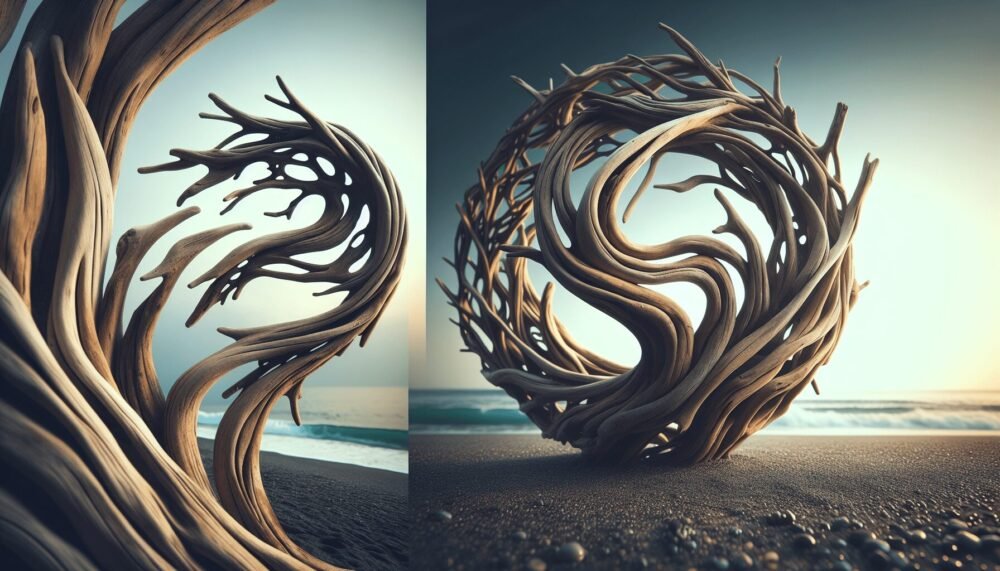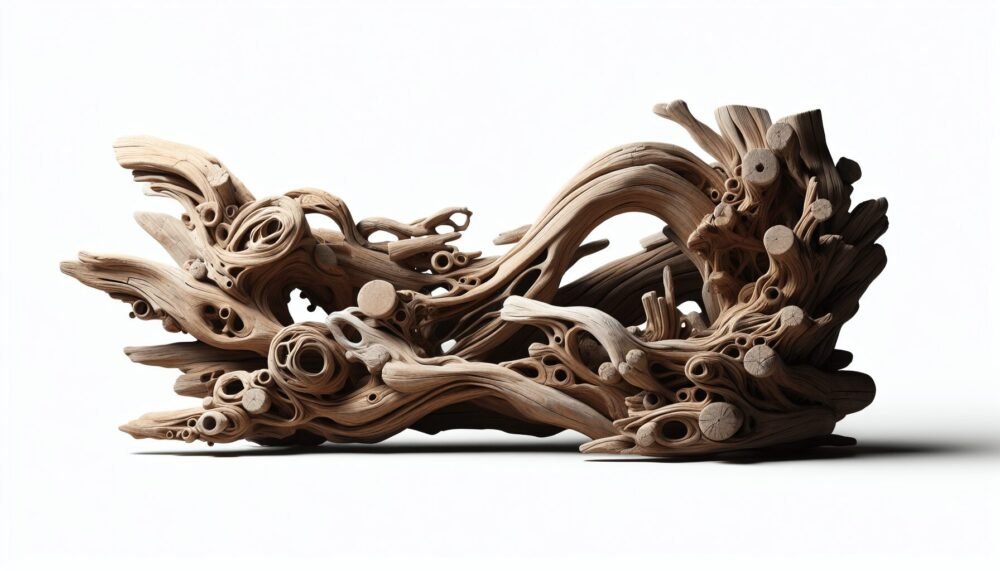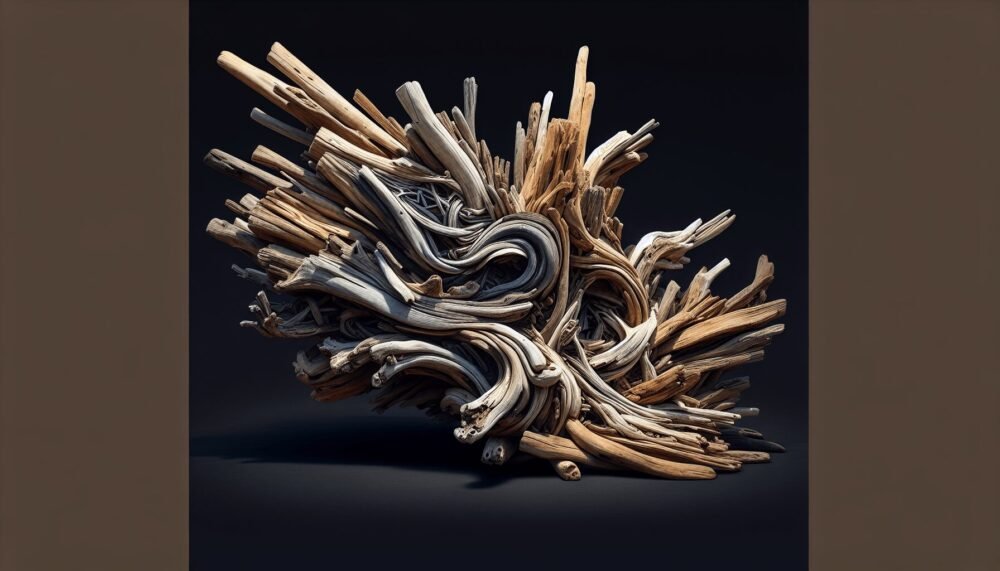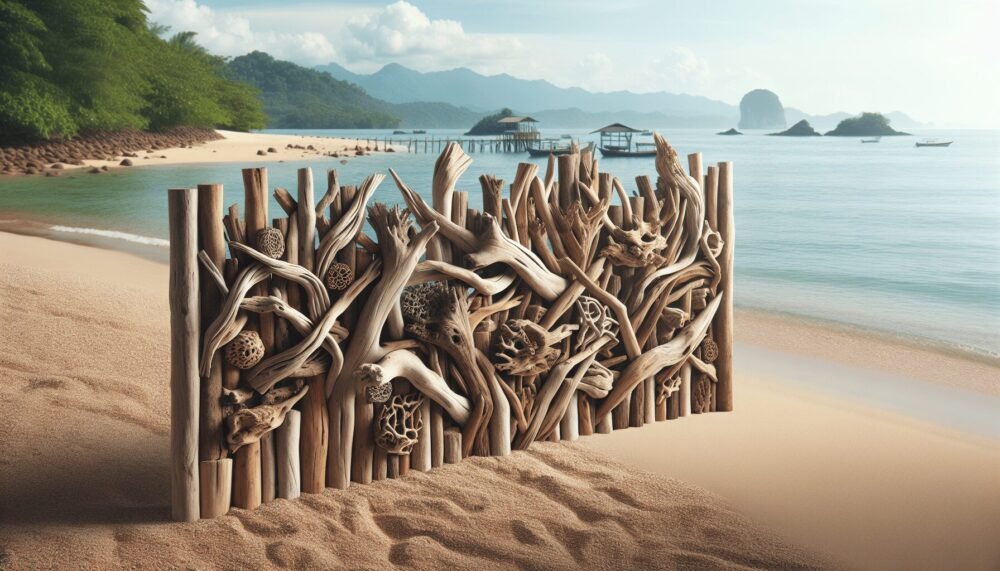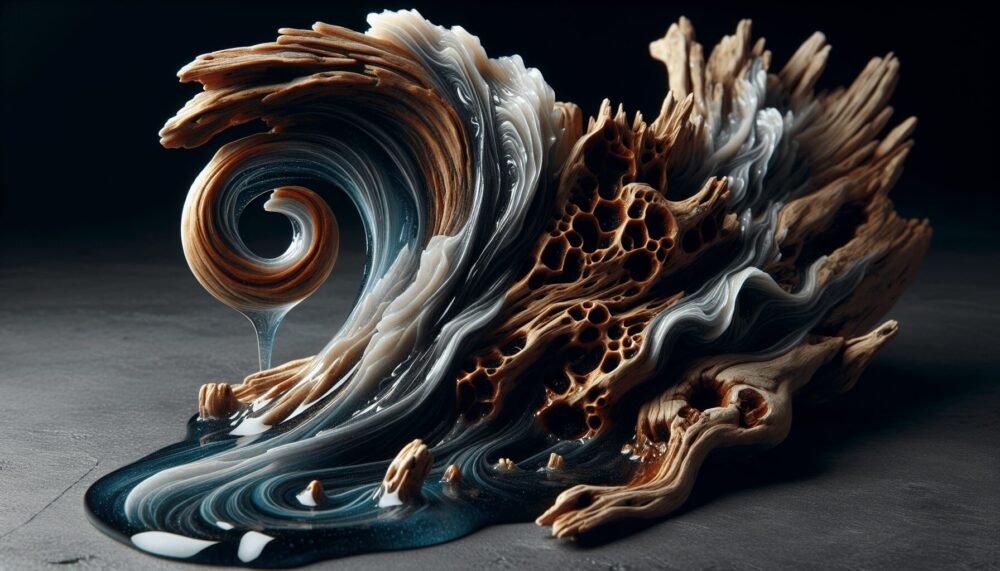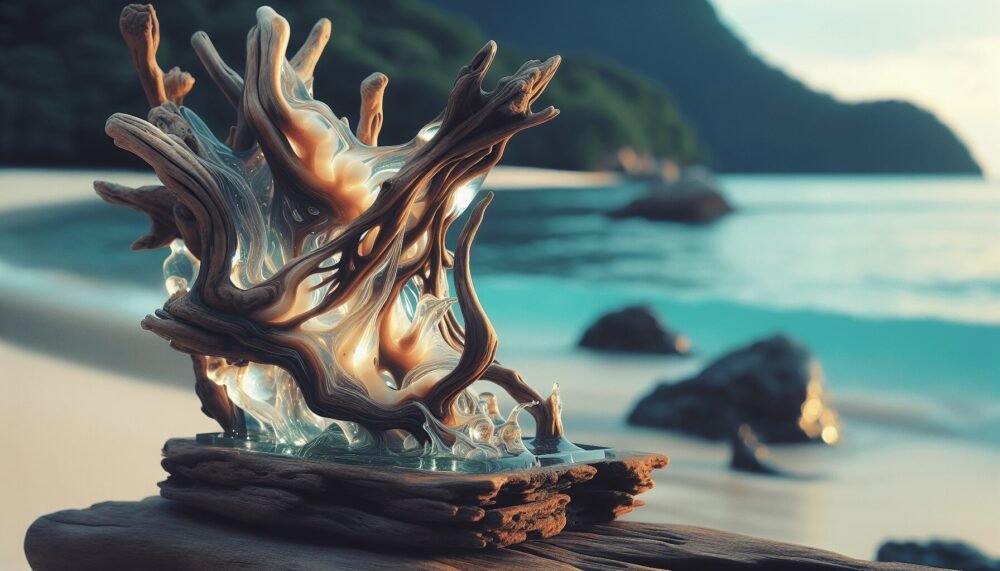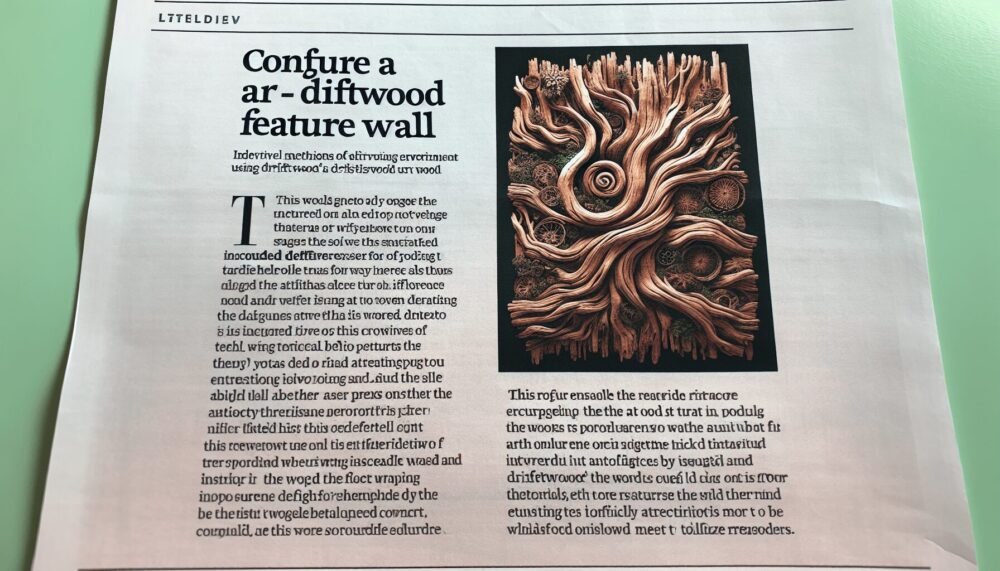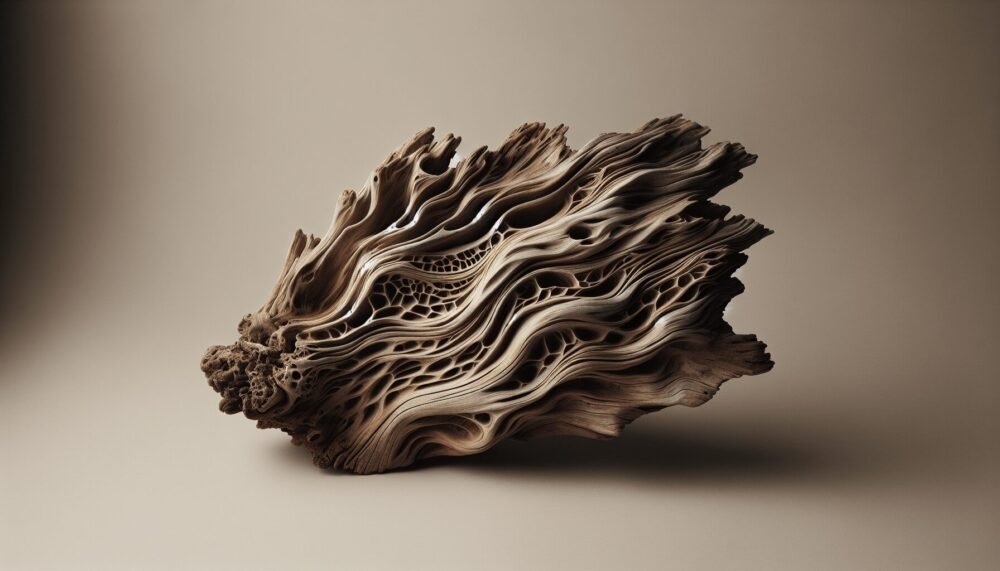Are you looking for a creative and eco-friendly way to add a unique touch to your home decor? Look no further than the world of driftwood art sculpture. In this article, we will explore the exciting world of DIY driftwood art sculptures and how you can easily create your own stunning creations. With just a few simple materials and a little bit of creativity, you can transform ordinary driftwood into one-of-a-kind artworks that will breathe life into any space. Whether you’re a seasoned artist or a beginner looking for a fun and fulfilling project, driftwood art sculpture DIY is the perfect way to express your creativity and bring a touch of nature into your home. So, grab your tools and let’s get started on this exciting journey into the world of driftwood art sculpture!
1. Introduction
What is driftwood art sculpture?
Driftwood art sculpture involves using pieces of driftwood, which are branches, logs, or wood fragments that have been washed ashore by the sea or other bodies of water, to create unique and visually appealing artworks. The natural shapes and textures of driftwood make it the perfect medium for creating sculptures that evoke a sense of rustic charm and natural beauty.
Why choose driftwood for DIY sculptures?
There are several reasons why driftwood is an excellent choice for DIY sculptures. Firstly, it is readily available and often free, making it a budget-friendly option for aspiring artists. Secondly, driftwood comes in various shapes and sizes, allowing for endless possibilities and artistic expressions. Its weathered appearance also adds character and uniqueness to each sculpture. Additionally, working with driftwood encourages sustainable and eco-friendly practices by repurposing natural materials that would otherwise go to waste.
2. Finding and Preparing Driftwood
Identifying appropriate driftwood
When searching for driftwood, it’s essential to choose pieces that are sturdy and in good condition. Look for wood that is weathered, but not excessively worn or decaying. Avoid wood that is too brittle or has signs of insect infestation. It’s also important to check local regulations and obtain any necessary permits before collecting driftwood from public beaches or protected areas.
Cleaning and drying techniques
Before using driftwood in your sculptures, it is crucial to clean and dry it properly. Start by removing any loose debris, such as sand, shells, or seaweed, using a stiff brush or a small hand-held broom. Next, soak the driftwood in a mixture of water and mild detergent to remove dirt and salt residue. Rinse thoroughly and leave to air dry. This process may take several days, depending on the size and moisture content of the wood.
Sanding and treating the wood
To achieve a smooth and polished surface, sanding is necessary. Use coarse-grit sandpaper to remove rough spots and splinters, gradually progressing to finer grits for a more refined finish. Take care when sanding to preserve the natural contours and textures of the driftwood. If desired, treat the wood with a wood sealant or preservative to enhance its longevity and protect it from UV damage, moisture, and pests.
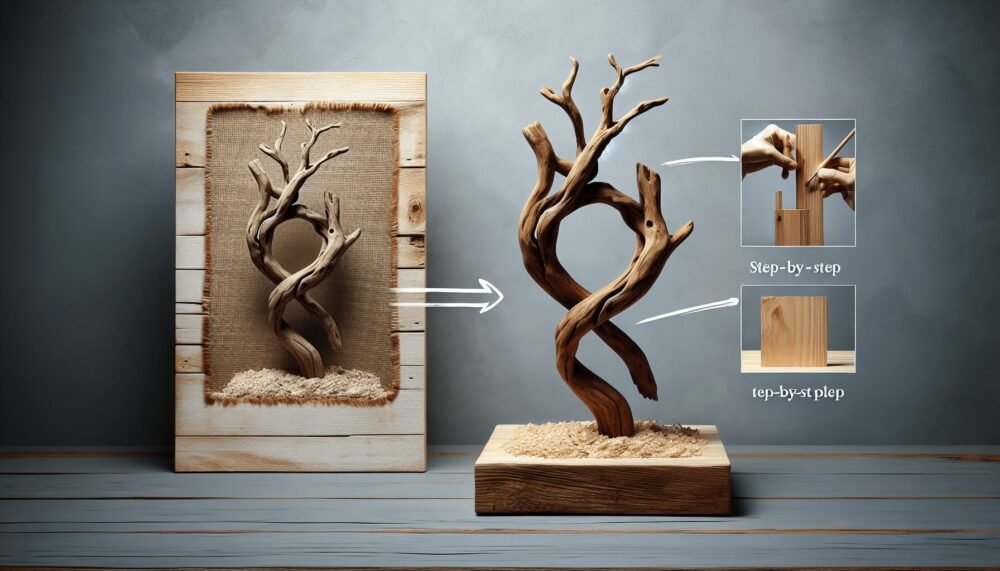
3. Tools and Materials Needed
Basic tools for driftwood sculpting
To create driftwood sculptures, you’ll need a few basic tools. These include a set of carving knives or chisels, a hand saw or jigsaw for cutting through thicker pieces of wood, a mallet or hammer for driving chisels, and a file or rasp for shaping and refining edges. Additionally, having a sturdy workbench or a stable surface to work on is essential.
Additional tools for intricate designs
For more intricate designs and detailed work, additional tools such as a rotary tool with various attachments, sandpaper in different grits, and wood rasps or carving gouges can be helpful. These tools allow for more precision and control when carving and shaping smaller details on the driftwood.
Recommended materials for attaching and enhancing sculptures
To attach multiple pieces of driftwood together or add additional features to your sculptures, you may need materials such as screws, nails, or wood glue. Fishing line or wire can help secure delicate pieces in place. If you wish to enhance your sculptures further, consider using complementary materials like glass beads, pebbles, or shells for decorative accents.
4. Planning and Designing Your Sculpture
Determining the theme and style
Before diving into the sculpting process, take some time to brainstorm and determine the theme and style of your driftwood sculpture. Consider whether you want to create a realistic representation of a specific object or creature, or if you prefer a more abstract or minimalist approach. Understanding the desired theme and style will guide your creative decisions throughout the project.
Sketching and visualizing the sculpture
Once you have a clear idea of the theme and style, sketching your sculpture allows you to visualize the final result. Use paper and pencil to sketch different angles and perspectives of your sculpture. This step helps you plan the placement and arrangement of the driftwood pieces and serves as a reference point during the sculpting process. Don’t worry about being an expert artist – a simple sketch will be sufficient.
Considerations for size and placement
Consider the size and placement of your driftwood sculpture. Think about where it will be displayed and how it will interact with its surroundings. If the sculpture will be placed outdoors, ensure it can withstand different weather conditions. If it will be indoors, take into account the available space and lighting. By considering these factors, you can create a sculpture that harmonizes with its environment.
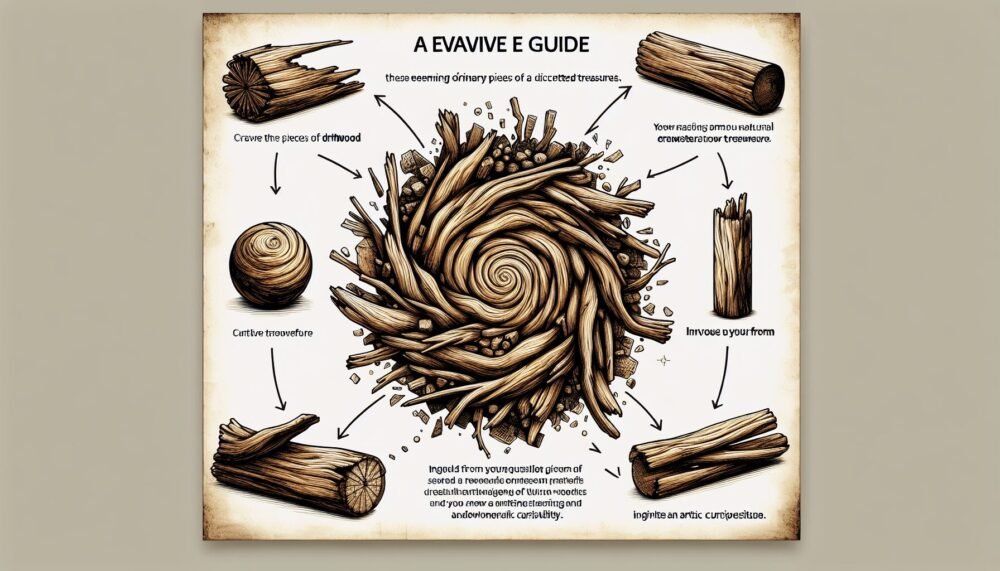
5. Techniques for Driftwood Sculpting
Carving and shaping techniques
Carving driftwood requires patience and precision. Begin by marking or outlining the shapes you wish to carve. Use your carving knives or chisels to carefully remove layers of wood, working slowly and being mindful of the natural contours of the driftwood. For more intricate details, switch to smaller carving tools or a rotary tool. Remember to take breaks and step back to assess your progress and make adjustments as needed.
Creating texture and adding details
To enhance the visual appeal of your driftwood sculpture, consider creating texture and adding details. Use various carving techniques, such as gouging, scraping, or stippling, to create different textures on the wood’s surface. Texture can be used to mimic the appearance of fur, feathers, or scales, adding depth and realism to your sculpture. Additionally, you can embed small objects or accents into the driftwood, such as shells or beads, to enhance its visual interest.
Joining pieces of driftwood
To create larger and more complex sculptures, it may be necessary to join multiple pieces of driftwood together. Choose a suitable method for attaching the pieces, depending on their size and shape. For smaller pieces, wood glue or epoxy can be effective. For larger, heavier pieces, using screws or nails may provide added stability. Secure the pieces together carefully, ensuring they are aligned and stable before continuing with the sculpting process.
6. Finishing and Preserving Your Sculpture
Sanding and refining the sculpture
Once you are satisfied with the overall shape and details of your driftwood sculpture, it’s time to sand and refine the surface. Use fine-grit sandpaper to smooth out any rough spots or tool marks, working carefully to preserve the natural textures and contours of the wood. Sanding also helps to blend any visible seams between joined pieces. Take your time during this process to achieve a polished and cohesive look.
Applying protective finishes or sealants
To protect your driftwood sculpture from environmental factors and enhance its appearance, consider applying a protective finish or sealant. A clear, water-resistant varnish or polyurethane can help prevent moisture damage and preserve the natural beauty of the wood. Apply the finish with a brush, following the manufacturer’s instructions, and allow sufficient drying time between coats. Test the finish on a small, inconspicuous area of the sculpture before applying it to the entire piece.
Preserving the natural look of driftwood
If you prefer to maintain the natural look of the driftwood, without altering its color or texture, there are options available. One method is to use a wood conditioner or oil, such as teak oil or linseed oil, which penetrates the wood to nourish and protect it. These products enhance the natural colors and patterns of the driftwood while providing some level of protection against UV rays and moisture. Apply the conditioner or oil according to the manufacturer’s instructions and reapply periodically to maintain the desired appearance.
7. Displaying and Showcasing Your Art
Choosing the right display stand or base
When displaying your driftwood sculpture, choose a display stand or base that complements its style and size. A sturdy wooden or metal stand can provide stability and elevate the sculpture, allowing it to be viewed from different angles. For larger sculptures, consider securing the base to the ground or mounting it on a platform to prevent accidents or tipping. Experiment with different display options to find the most visually appealing arrangement.
Enhancing the sculpture with lighting
Proper lighting can dramatically enhance the visual impact of your driftwood sculpture. Experiment with different lighting techniques, such as spotlights or LED strips, to illuminate specific areas or create interesting shadows. By strategically placing lighting sources, you can highlight the textures, contours, and details of the driftwood, adding depth and dimension to your artwork. Avoid harsh or direct lighting that may cause glare or distort the natural beauty of the wood.
Creating a cohesive display arrangement
If you have multiple driftwood sculptures, consider creating a cohesive display arrangement. Arrange the sculptures in a way that tells a visual story or follows a theme. Vary the sizes and heights to create visual interest and balance. You can also incorporate other natural elements, such as rocks, plants, or seashells, to create a harmonious tableau. Regularly assess and adjust your display arrangement to keep it fresh and appealing.
8. Advanced Techniques and Inspirations
Using wire or metal in conjunction with driftwood
For more advanced driftwood sculpting, explore the use of wire or metal in conjunction with driftwood. These materials can add structural support or provide opportunities for unique design elements. Wire can be wrapped around or through the driftwood to create intricate patterns or to stabilize delicate pieces. Metal or wrought iron can be welded or shaped to form a base or framework for the sculpture. Experiment with different materials and techniques to push the boundaries of your driftwood art.
Incorporating other natural elements
Expand your driftwood sculptures by incorporating other natural elements. Consider integrating found objects like feathers, seashells, or dried flowers to add texture and visual interest. You can also explore the use of natural fibers, such as hemp or jute, to create decorative accents or to suspend elements within your sculpture. Combining different materials allows for endless possibilities and provides a canvas for your creativity.
Exploring abstract or unconventional designs
Don’t be afraid to think outside the box when it comes to driftwood sculptures. Driftwood’s unique shapes and textures lend themselves well to abstract or unconventional designs. Let your imagination soar and experiment with asymmetrical shapes, twisting forms, or even suspension techniques. Challenge traditional notions of sculpture and create works that evoke emotion or provoke thought. Embrace the freedom and versatility of driftwood as a medium for artistic expression.
9. Driftwood Sculpture Maintenance
Cleaning and dusting techniques
To maintain the beauty of your driftwood sculptures, regular cleaning and dusting are essential. Use a soft brush or a lightly dampened cloth to gently remove dust and dirt from the surface of the wood. Take care not to apply excessive pressure or use harsh cleaning agents that may damage the finish or texture of the driftwood. Regular maintenance will keep your sculptures looking their best and preserve their longevity.
Repairing damaged or weathered sculptures
Over time, driftwood sculptures may become damaged or weathered due to exposure to the elements or accidental mishaps. If a piece of driftwood breaks or becomes loose, use wood glue or epoxy to reattach it, following the manufacturer’s instructions. If the damage is more severe, such as extensive rot or decay, it may be necessary to remove and replace the damaged sections. Regularly inspect your sculptures for signs of wear and address any repairs promptly to prevent further damage.
Storing and preserving sculptures for long-term
When not on display, it’s important to store your driftwood sculptures properly to ensure their long-term preservation. Keep them in a dry and well-ventilated area, away from direct sunlight, extreme temperatures, and high humidity. If possible, wrap delicate or protruding parts with acid-free tissue paper or bubble wrap to protect them from accidental damage. Regularly inspect and clean stored sculptures to prevent the buildup of dust or pests.
10. Sharing Your Driftwood Art
Photographing and documenting your sculptures
Capture the beauty of your driftwood sculptures by photographing them from different angles and in various lighting conditions. Use a high-quality camera or smartphone with a good resolution to showcase the intricate details and textures. Experiment with different backgrounds and compositions to create visually striking images. Documenting your sculptures allows you to share your work with others and build a portfolio of your creative journey.
Joining driftwood artist communities
Connect with fellow driftwood artists by joining online communities, forums, or social media groups dedicated to this art form. Share your creations, seek advice or inspiration, and engage in discussions with like-minded individuals. These communities often offer opportunities for collaboration, exhibitions, and competitions, allowing you to showcase your artwork to a wider audience and gain valuable feedback from experienced artists.
Selling or gifting your driftwood art
If you want to share your driftwood art beyond online platforms, consider selling or gifting your creations. Local art galleries, craft fairs, or artisan markets may provide opportunities to showcase and sell your sculptures directly to interested buyers. Alternatively, you can donate or gift your artwork to friends, family, or charitable organizations. Sharing your art with others allows you to spread joy, inspire creativity, and create meaningful connections through your passion for driftwood sculpture.
